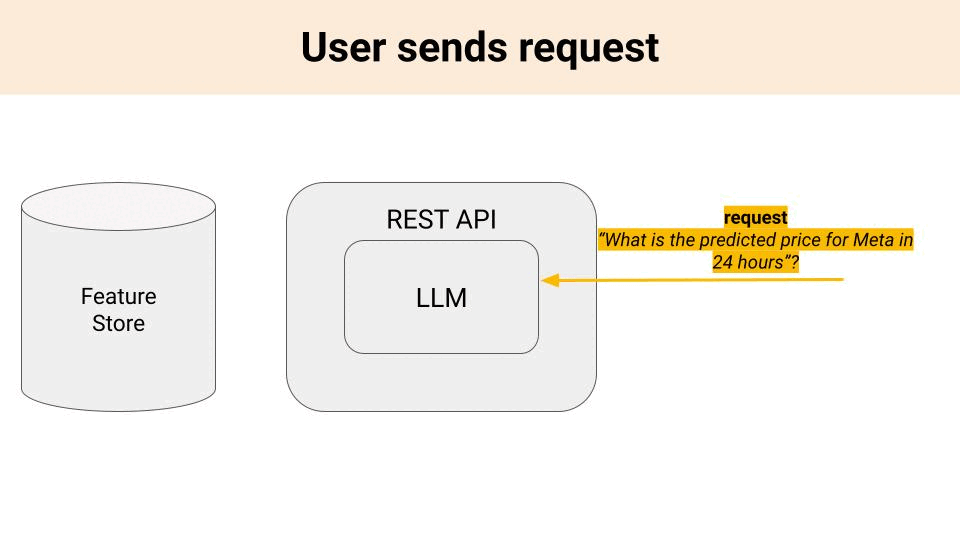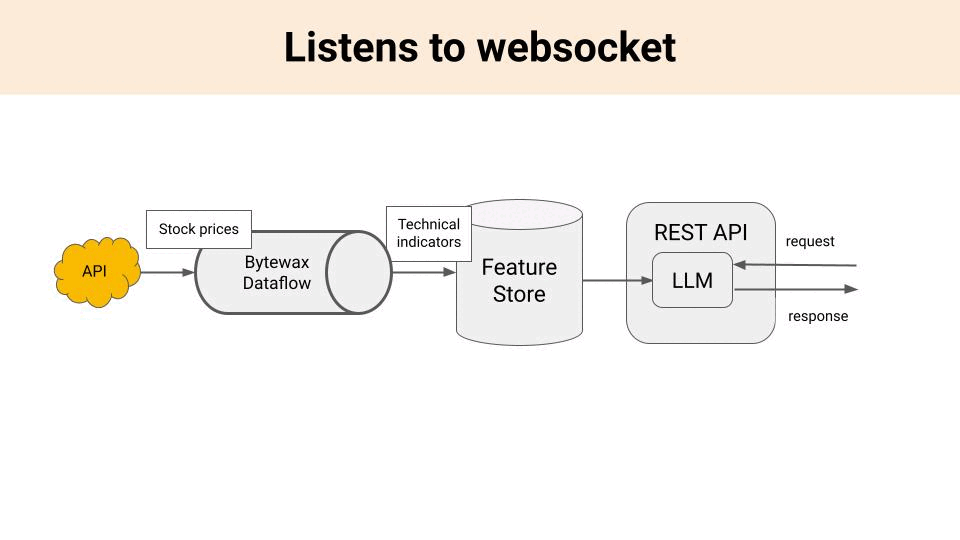Real-time data for your LLM
Oct 23, 2023
The output of a Large Language Model is as good as the input prompt you send to the model.
Now, what makes a good prompt?
Prompt ingredients 🍱
A prompt is a string that blends 2 things:
-
A prompt template to condition the model towards the specific task we want to accomplish.
-
Contextual information the model needs to generate good output for our task, that we embed in the prompt template.
Example
Let’s say you want to build a stock predictor using LLMs, and deploy it as a REST API. The model will take in a user input request like
“What is the predicted price for Meta in 24 hours”?
and return a price prediction.

And the thing is, no matter how good your LLM is, you will get bad predictions unless you embed contextual information, like
→ quantitative information, e.g. current price, price momentum, volatility or moving average.
→ qualitative information, e.g. recent financial news related to Meta.
in your prompt template.
For example:
prompt_template = “““
You are an expert trader in the stock market. I will give you a set of technical indicators for a given stock, and relevant financial news, and I want you to generate a price prediction for the next 24 hours. I want you to be be bold, and provide a numeric price prediction, and justify your prediction based on the technical indicators and news I provided.## Technical indicators
{QUANTITATVE_INFORMATION}
## News
{QUALITATIVE_INFORMATION}
What is the predicted price and your explanation for it?
“““
The question is then, where is this quantitative and qualitative information coming from?
Real-time ML to the rescue ⚡
To generate up-to-date real-time information you need 2 things:
1 → A storage and serving layer for these information, which is either a Feature Store or a Vector DB, depending on your use case, and
2 → A real-time feature pipeline, that listens to an incoming information stream (e.g. a websocket of stock prices), generate features (e.g. price technical indicators) and stores them in the storage layer (Feature Store or VectorDB).
This way, your system naturally decomposes into independent 2 pipelines, that can be managed by different teams.
→ The inference pipeline

→ The real-time feature pipeline

How do you build a feature pipeline?
Python alone is not a language designed for speed 🐢, which makes it unsuitable for real-time processing. Because of this, real-time feature pipelines were usually writen with Java-based tools like Apache Spark or Apache Flink.
However, things are changing fast with the emergence of Rust 🦀 and libraries like Bytewax 🐝 that expose a pure Python API on top of a highly-efficient language like Rust.
So you get the best from both worlds.
-
Rust's speed and performance, plus
-
Python vast ecosystem of libraries.
Full source example
In this repository, you will find a fully working implementation of a modular real-time feature pipeline using Python and Bytewax. Enjoy it, and give it a star ⭐ on GitHub if you found it useful
Let’s go real time! ⚡
The only way to learn real-time ML is to get your hands dirty.
→ Go pip install bytewax
→ Support their open-source project and give them a star on GitHub ⭐ and
→ Start building 🛠️

